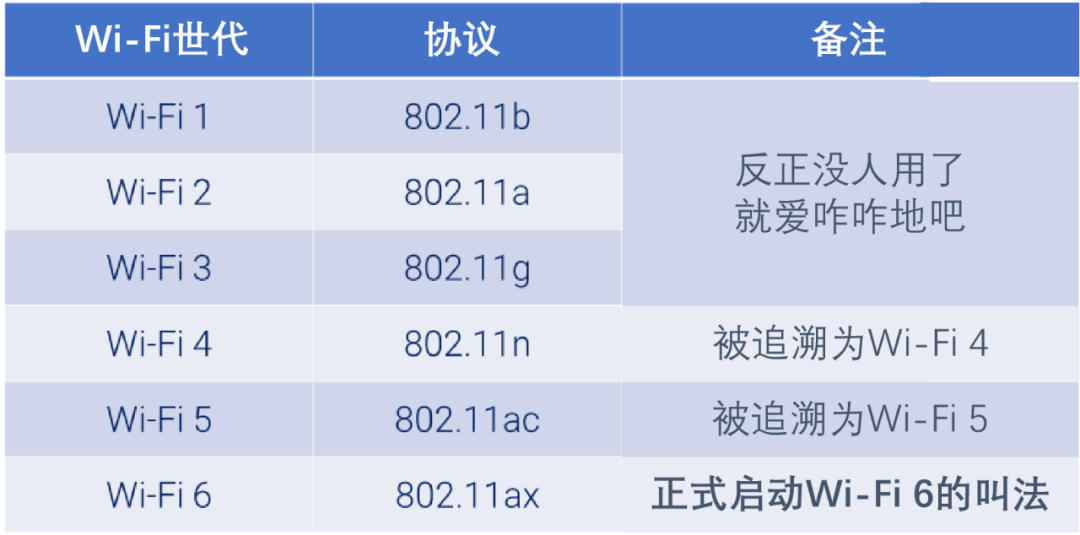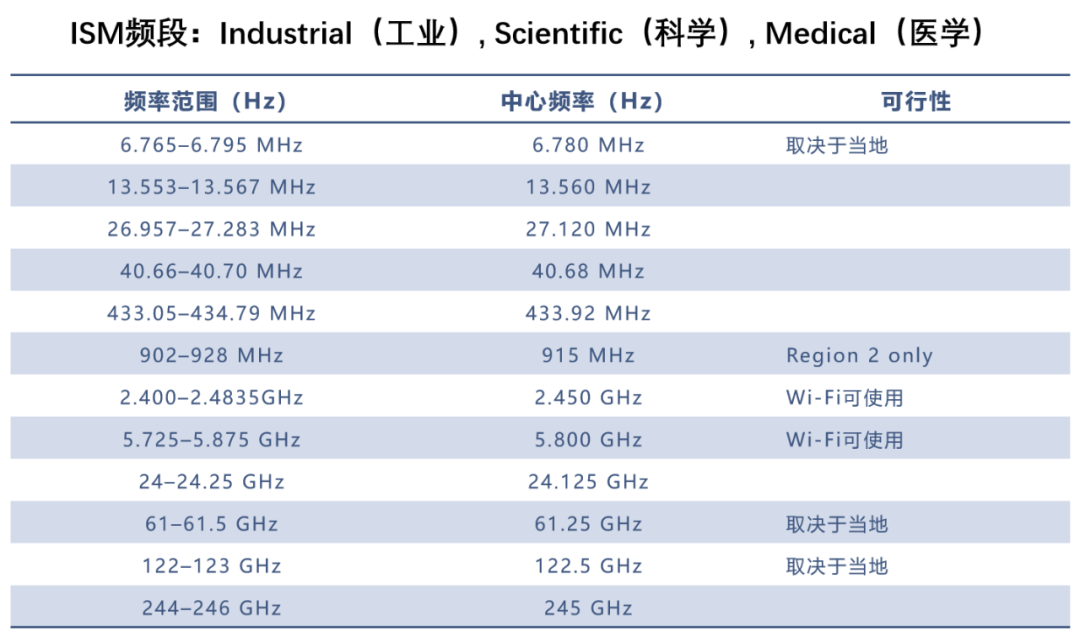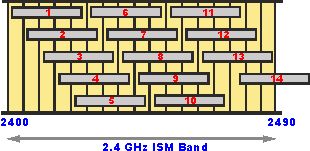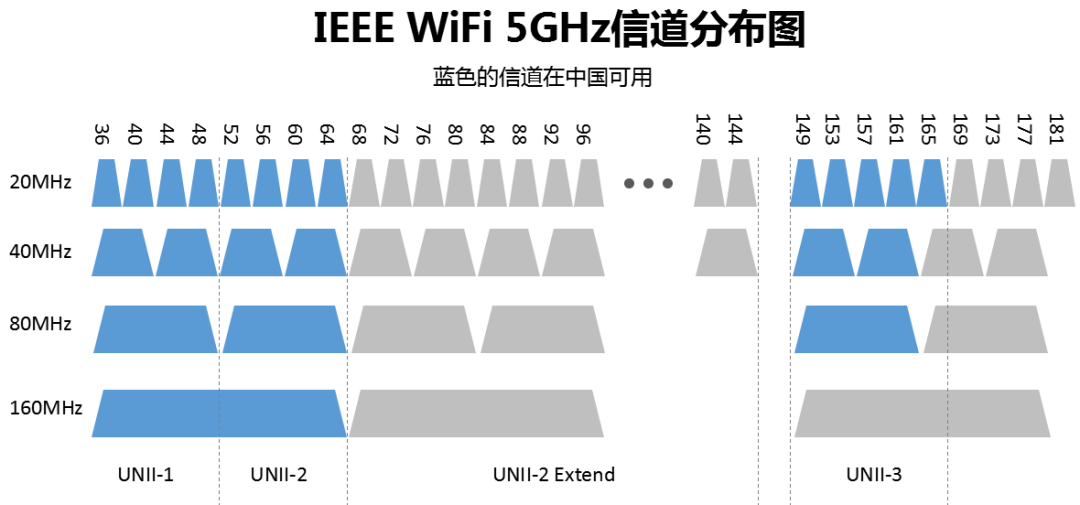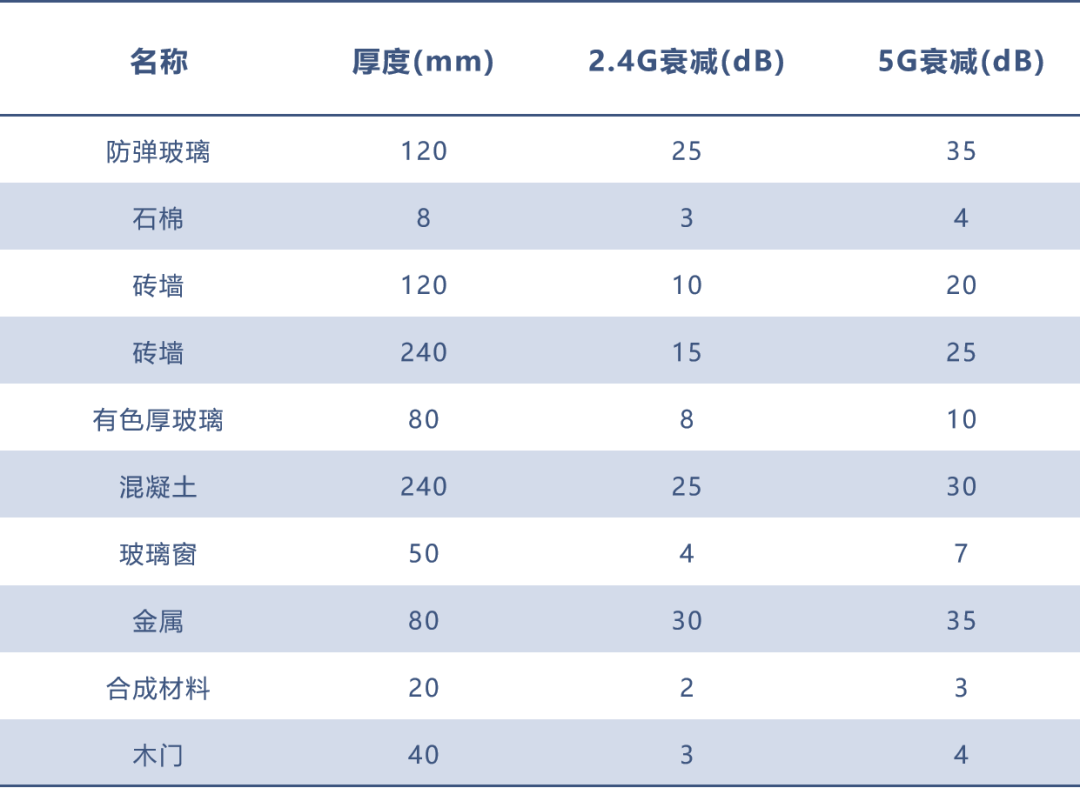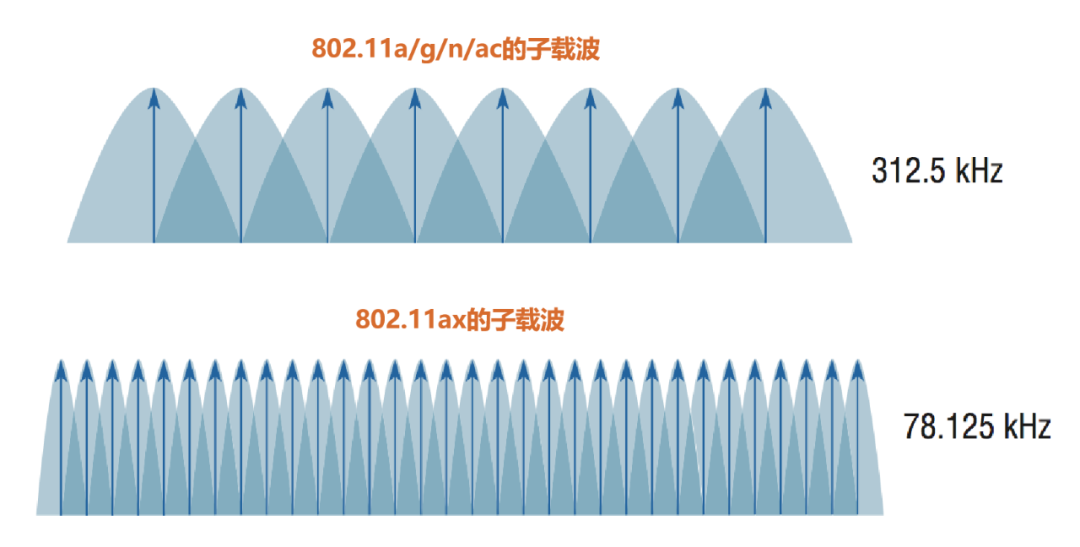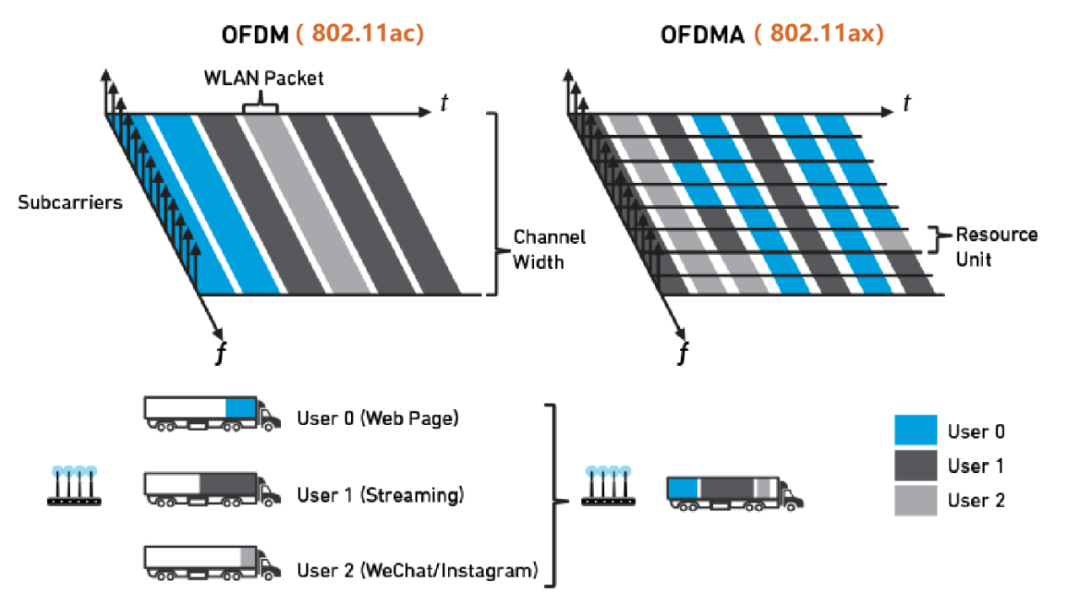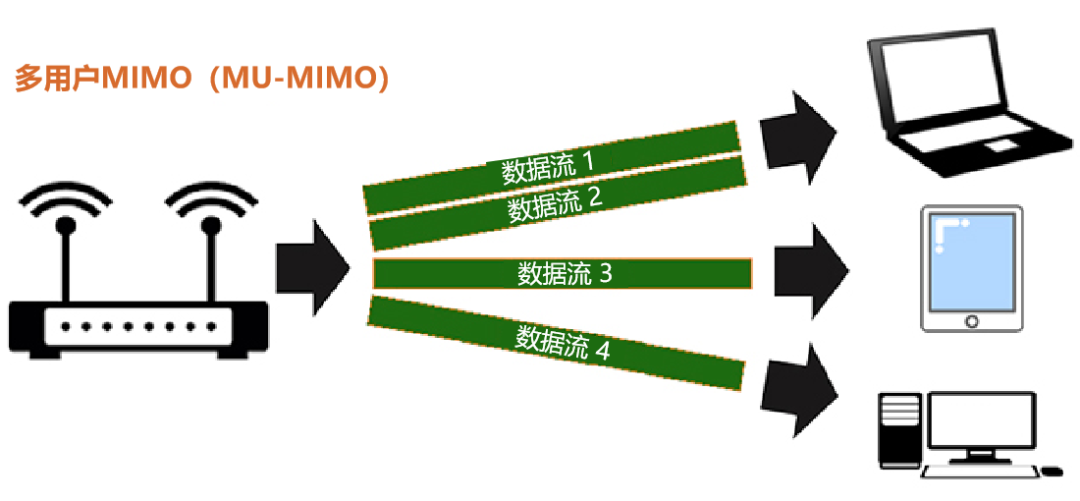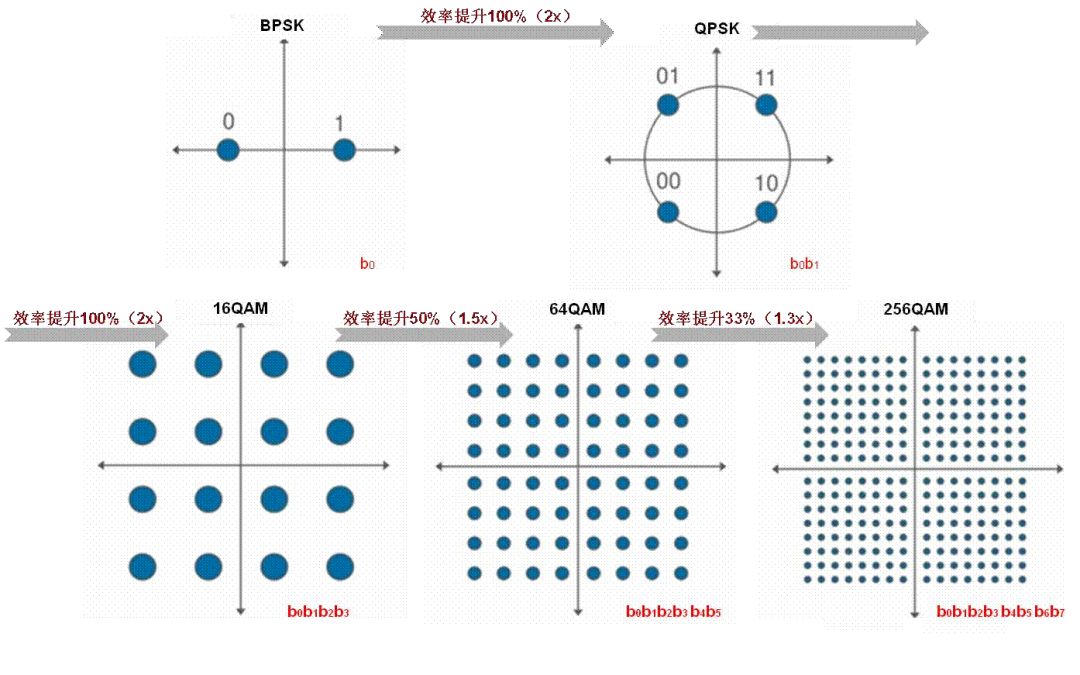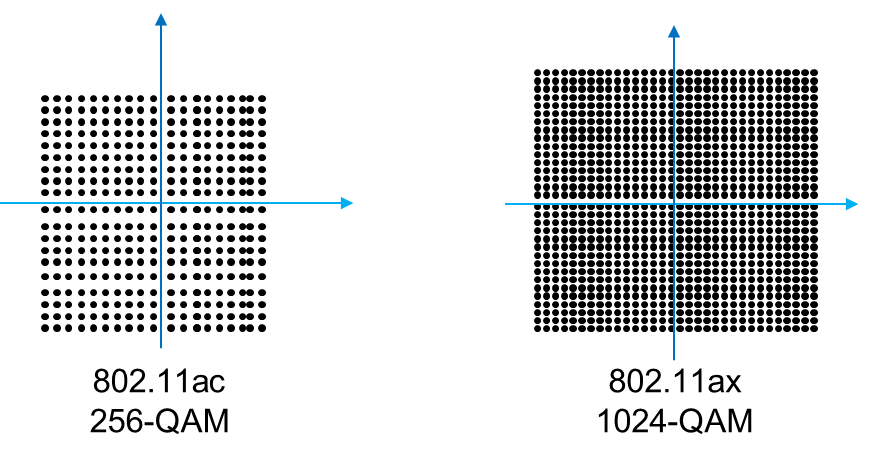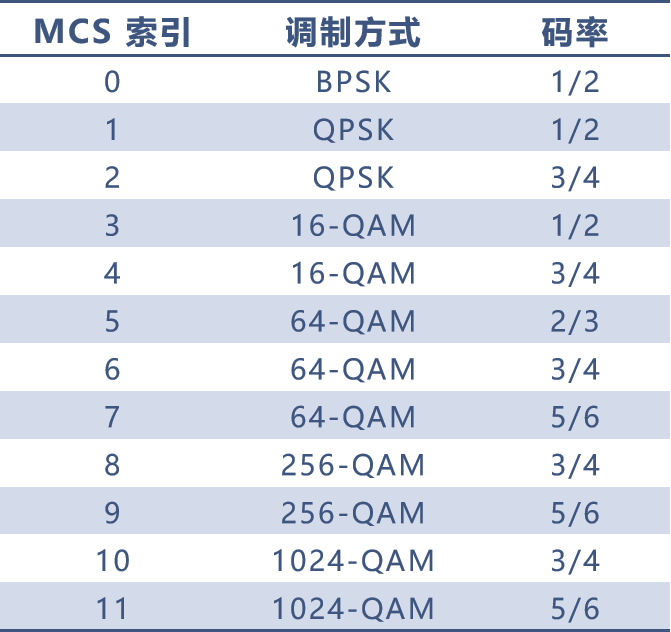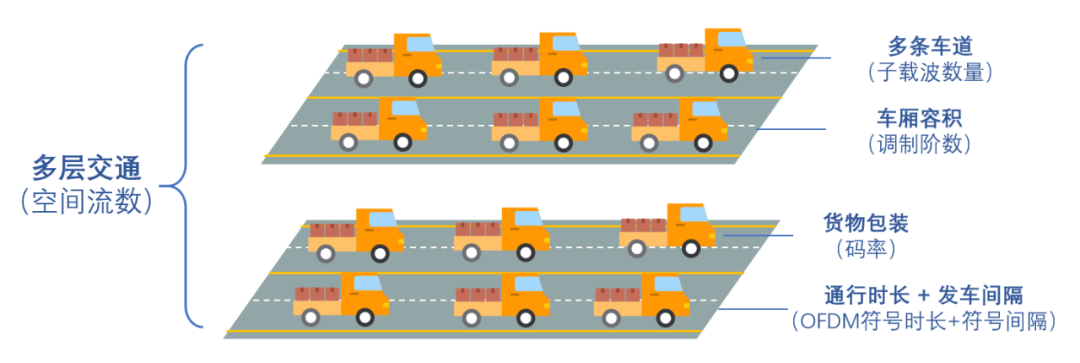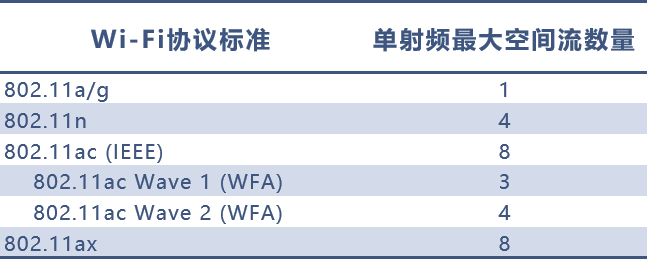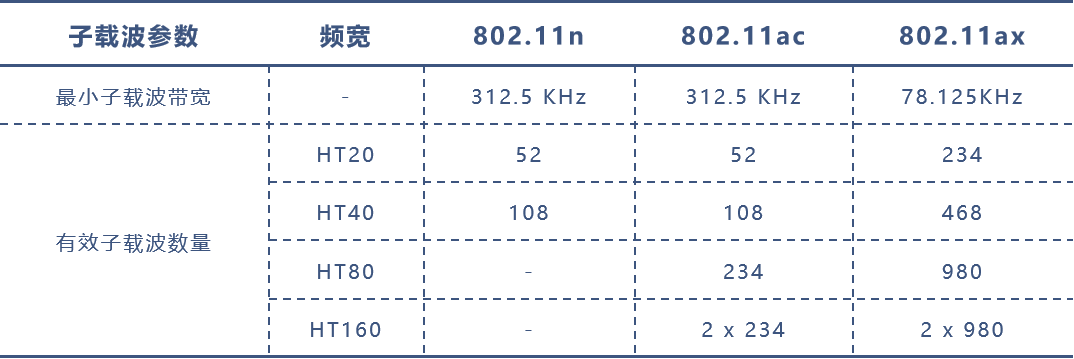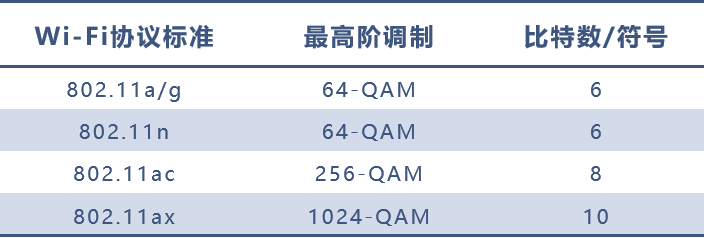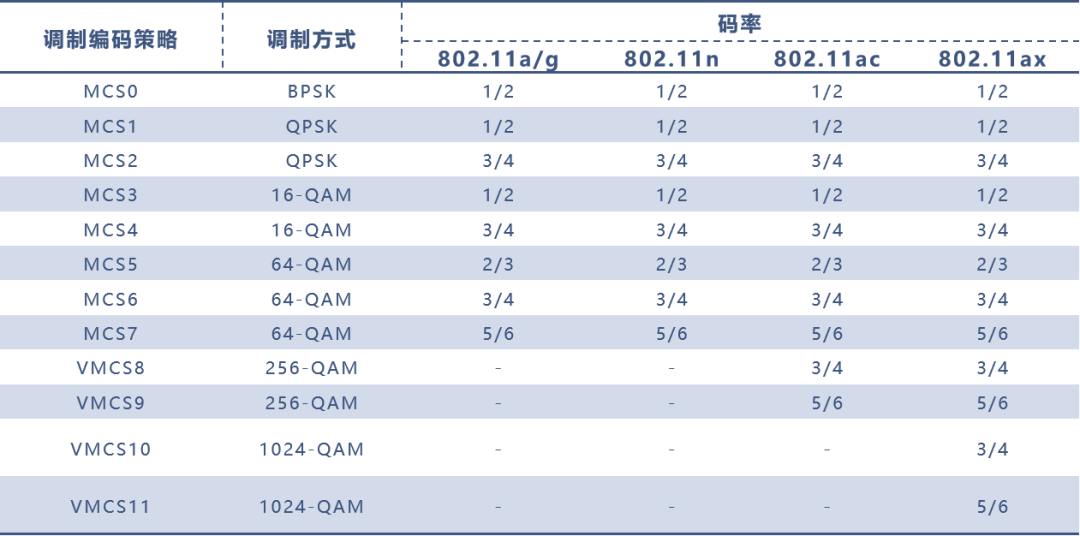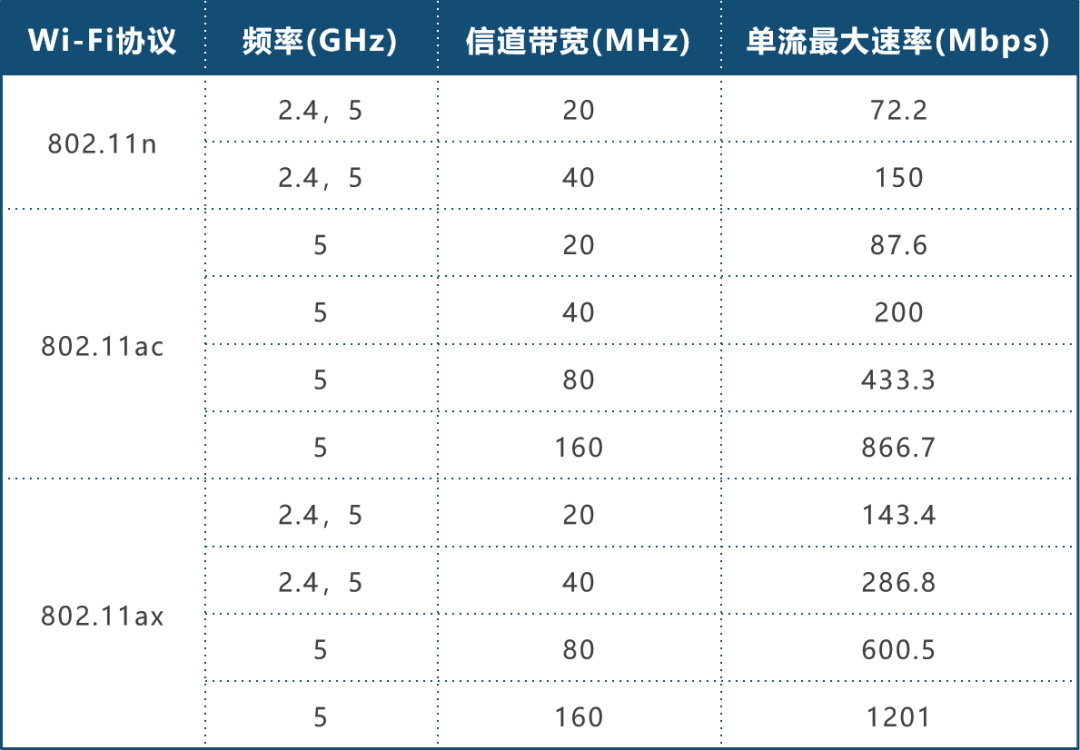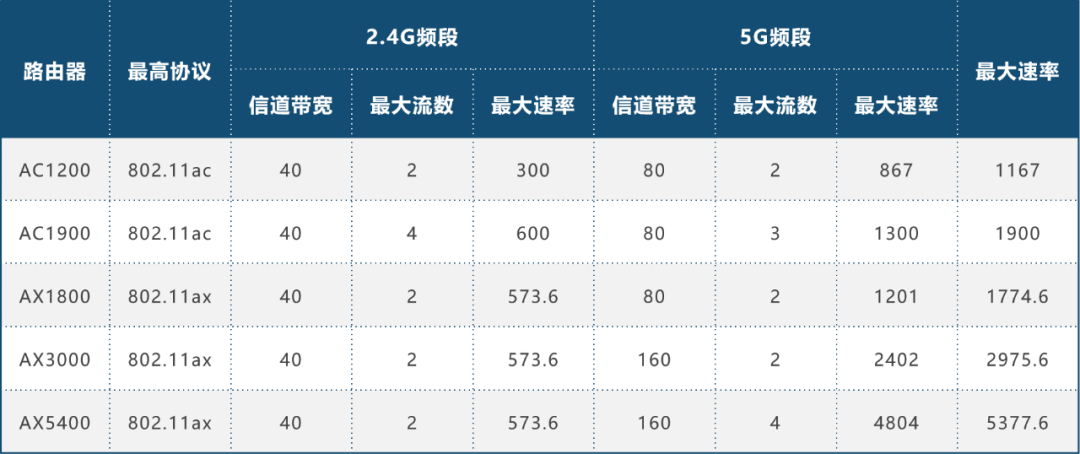Skip to content
Wi-Fi is a wireless communication technology certified and trademarked by the Wi-Fi Alliance. The underlying technical standards are defined by the Institute of Electrical and Electronics Engineers (IEEE) in the 802.11 series of protocols..
The Wi-Fi Alliance (full name: International Wi-Fi Alliance Organization, English: Wi-Fi Alliance, abbreviated as WFA).
1. Development of Wi-Fi Protocols
Since the first version in 1997, the 802.11 series of protocols has continuously evolved, experiencing multiple versions such as 802.11a/b/g/n/ac, with increasing internet speeds.
The latest protocol version is 802.11ax, which is the rapidly developing Wi-Fi 6 in recent years.
The development history of IEEE 802.11 series standards, from the first generation to the sixth generation.
For many years, there was no concept of “Wi-Fi generations” in the world; users simply referred to the protocol numbers as 802.11 followed by several letters, which was very unfriendly to ordinary users.
It wasn’t until 2018 that the Wi-Fi Alliance decided to promote the next generation technical standard 802.11ax with a simpler and more understandable name: Wi-Fi 6. The previous generations, 802.11ac and 802.11n, naturally became Wi-Fi 5 and Wi-Fi 4.
Only after the birth of Wi-Fi 6 did the term Wi-Fi 5 come into existence.
On September 16, 2019, the Wi-Fi Alliance announced the launch of the Wi-Fi 6 certification program. Since then, the name Wi-Fi 6 has resonated worldwide, and most newly released devices now support Wi-Fi 6.
2. Wi-Fi Channels and Frequency Bands Used
Wi-Fi primarily operates on two frequency bands: 2.4GHz and 5GHz. These two bands are known as ISM (Industrial Scientific Medical) bands, and can be used without authorization as long as the transmission power meets national standards.
The ISM frequency bands vary by country.
2.4GHz is the first ISM band used globally, with a spectrum range of 2.40GHz to 2.4835GHz, providing a total bandwidth of 83.5M.
The commonly used Bluetooth, ZigBee, and wireless USB also operate in the 2.4GHz band. Additionally, microwaves and cordless phones also use the 2.4GHz band. Even the internal chips of wired USB interfaces emit useless signals at 2.4GHz during operation, causing interference.
As can be seen, many devices operate simultaneously on 2.4GHz, leading to severe congestion and interference.
Wi-Fi divides the 83.5M bandwidth on 2.4G into 13 channels, each 20M wide. Note that these channels overlap; originally only 3 could fit, but now 13 are squeezed in, making mutual interference inevitable, which can only be mitigated, resulting in slower speeds overall as users take turns.
2.4G Spectrum and Channels (Channel 14 is not allowed for use in China)
To what extent do channels overlap? From the following diagram, it can be seen that within these channels, only groups 1, 6, and 11, or 2, 7, and 12, or 3, 8, and 13 are completely non-overlapping, highlighting the congestion level of the 2.4GHz band.
2.4G Non-overlapping Channel Distribution
With 802.11n, users can use a 40M channel, but the 2.4GHz band still only has a total bandwidth of 83.5M, accommodating only two channels. Thus, only during quiet hours can a single user potentially use a 40M channel, coupled with interference from neighboring networks, making the high speeds of 802.11n difficult to achieve.
2.4G 40M Bandwidth Channel
If the 2.4GHz band is a narrow path, then the 5GHz band is undoubtedly a broad avenue.
The available range of the 5GHz band is 4.910GHz to 5.875GHz, providing over 900M of bandwidth, more than ten times that of 2.4G! This spectrum is so wide that different countries define the range of Wi-Fi usage based on their own circumstances.
For example, in China, there are 13 available 20M channels for Wi-Fi in the 5GHz spectrum, and continuous 20M channels can be combined to form 40M, 80M, or even 160M channels.
Distribution Map of 5G Channels in China
The 5GHz band has a large bandwidth, and with fewer devices operating on it, the speed is naturally faster and interference is lower. Therefore, to achieve a good speed experience for home networks, consider using 5GHz for whole-house coverage.
However, each has its pros and cons; while 5GHz has greater bandwidth and less interference, its signal attenuates quickly and is easily blocked, leading to weak wall penetration.
Penetration Loss of 2.4G and 5G Wi-Fi Signals
Thus, compared to 2.4GHz, the 5GHz signal is generally much weaker.
As for how far they can cover, this depends on the router’s antenna gain, sensitivity, the distribution of walls and obstacles in the home, and the desired internet speed, making it difficult to provide a specific answer.
3. Key Technologies of Wi-Fi
Why is Wi-Fi speed increasing?
In fact, the IEEE 802.11 series protocols have continuously borrowed from the 3GPP’s 4G/5G technologies, as the underlying technologies are common.
OFDM stands for Orthogonal Frequency Division Multiplexing. The system divides the carrier bandwidth into multiple orthogonal subcarriers in the frequency domain, akin to dividing a wide road into multiple parallel lanes, greatly improving traffic efficiency.
In Wi-Fi 5 and earlier (802.11a/b/g/n/ac), the subcarrier width was 312.5KHz.
With Wi-Fi 6 (802.11ax), the subcarrier width has been reduced to 78.125KHz, effectively increasing the number of lanes on the same width road.
Wi-Fi 6 has more subcarriers.
Under OFDM, each user must occupy all subcarriers across the full bandwidth simultaneously. If a data transmission is not large enough to utilize the frequency resources, other users cannot flexibly use the remaining capacity, leading to inefficiency in spectrum resource utilization.
To address this issue, Wi-Fi 6 introduces OFDMA technology, adding an ‘A’ to its name, which stands for Orthogonal Frequency Division Multiple Access. Multiple access means multiple users can share the resources.
OFDMA allows multiple users to share all subcarriers simultaneously. It’s like a shipping company consolidating data from multiple users into one shipment, maximizing truck capacity, which speeds up delivery for everyone and improves spectral efficiency.
The number of antennas on routers has been increasing, from none to one, two, three, four, six, eight… now, regardless of price, all routers look like crabs with their numerous antennas.
Why use so many antennas? To better implement MIMO (Multiple Input Multiple Output) technology.
In simple terms, during signal transmission, multiple antennas can simultaneously send different data streams, naturally doubling the speed; during reception, multiple antennas can receive signals from the mobile phone simultaneously, enhancing sensitivity like wearing a hearing aid.
Single User MIMO (SU-MIMO)
If all antennas serve only one user simultaneously, it is called Single User MIMO (SU-MIMO). Furthermore, if the router transmits in four streams and the mobile phone receives in four streams, it can be specifically referred to as 4×4 MIMO.
Sometimes, even if the router has many antennas and strong capabilities, it may find that the mobile phones are all weak. The router can transmit four streams, but if the mobile phone can only receive two, the router must reduce its output to two streams. Isn’t that a waste?
Multi User MIMO (MU-MIMO)
There is a solution; if one mobile phone has fewer receiving antennas, multiple phones combined will have more. Hence, the router considers multiple phones together as a powerful virtual phone, enabling advanced MIMO. This multi-user participation in MIMO is called Multi User MIMO (MU-MIMO), also known as virtual MIMO.
In addition, multiple antennas can also use beamforming technology to form directional narrow beams, accurately covering users. Due to the concentration of energy in narrow beams, coverage can extend further, and wall penetration can be improved.
From this perspective, having more antennas is better; does that mean you should always choose routers with many antennas? This could be a trap.More antennas only stack visible external hardware, which may look impressive, but whether the internal design can support so many antennas is uncertain.
More importantly, whether it’s MIMO or beamforming, they require software algorithms to function, which are often more complex than hardware. Different manufacturers have varying optimization capabilities, leading to significant performance differences.
Therefore, it is advisable when purchasing a router not to focus too much on the number of visible antennas, but rather to check if their product claims support beamforming, 4×4 MIMO, or MU-MIMO. If the manufacturer heavily promotes these features, it at least indicates their confidence in these functions and that they are selling points.
Modulation Coding Scheme (MCS)
Modulation coding consists of modulation and coding, which together determine the number of bits that can be sent simultaneously per unit time.
The modulation coding scheme typically combines modulation and coding into multiple levels; the higher the level, the faster the data transmission rate.
The role of modulation is to map the encoded data (a random combination of 0s and 1s) onto the smallest unit of the aforementioned frame structure: OFDM symbols. Only signals that have been modulated can be transmitted.
BPSK, QPSK, 16QAM, 64QAM, and 256QAM constellation diagrams.
Common modulation methods include BPSK, QPSK, 16QAM, 64QAM, and 256QAM, which can simultaneously send 1, 2, 4, 6, and 8 bits, respectively.
Wi-Fi 6 supports 1024QAM, allowing for the simultaneous transmission of 10 bits of data, significantly boosting the rate.
Comparison of 256QAM and 1024QAM.
However, during encoding, to correct errors, many redundant bits are added, meaning that the useful data only constitutes a part of the total. When considering internet speed, we refer only to the transmission rate of useful data, as redundant bits are discarded during decoding.
This brings us to the concept of code rate, which is the proportion of useful data in the total data volume after encoding. If the code rate is 3/4, it means that 3/4 of the encoded data is useful, while 1/4 consists of added redundant bits.
Different modulation methods combined with different code rates form the modulation coding scheme (MCS).
The table below shows the MCS for Wi-Fi 6, where the highest level MCS is 11, corresponding to 1024QAM with a code rate of 5/6.
4. Calculation of Wi-Fi Rates
The peak rate for a single band Wi-Fi can be calculated using the following formula:
We can use a highway system as a model for calculation.
Spatial streams are analogous to multiple layers of traffic, the number of subcarriers corresponds to multiple lanes on each layer of the highway, the modulation order represents the truck’s cargo capacity, and the symbol duration and spacing correspond to the duration of the truck on the highway plus the departure interval.
Spatial Streams: As the protocol evolves, the number of spatial streams supported by Wi-Fi has increased, driving peak rates higher.
As shown in the table below, the IEEE 802.11ac can support a maximum of 8 streams, but the Wi-Fi Alliance (WFA) deemed this capability too strong during certification, as it would be too costly to implement, thus dividing it into two phases:
These two phases are also relatively conservative and did not ultimately achieve the IEEE design capacity. Wave 1 supports 3 streams, while Wave 2 supports 4 streams.
With 802.11ax, it can support up to 8 streams. The Wi-Fi Alliance packaged it as Wi-Fi 6 without transitional versions. However, how many streams your router can support depends on the manufacturer’s implementation.
Effective Subcarrier Count: The IEEE 802.11 series protocols have increasingly fine subcarrier divisions and larger channel bandwidths, leading to a continuous increase in the number of effective subcarriers.
As shown in the table below, 802.11n supports a maximum channel bandwidth of 40M, while 802.11ac supports 160M bandwidth, resulting in a more than fourfold increase in the number of effective subcarriers.
With 802.11ax, the maximum supported channel width remains 160M, but the subcarrier spacing is only 1/4 of that of previous protocols, thus the maximum number of supported subcarriers has doubled compared to 802.11ac.
Modulation Order: 802.11ac supports a maximum of 256QAM, with a modulation order of 8, meaning each symbol can carry 8 bits of data simultaneously.
802.11ax supports a maximum of 1024QAM, allowing each symbol to carry 10 bits of data, a 25% improvement over the previous generation.
MCS and Code Rate: The protocol defines various combinations of modulation methods and code rates, known as Modulation Coding Scheme (MCS).
The higher the modulation order, the higher the code rate, but the anti-interference ability decreases. Therefore, high-order MCS can only be effective when the wireless signal strength is sufficient and interference is minimal.
Symbol Length + Symbol Interval: In 802.11ac and earlier, the symbol length is 3.2 microseconds, and the symbol interval is 0.8 microseconds, but 0.4 microseconds is also supported. When calculating peak rates, we naturally use the shorter interval, so the symbol length + symbol interval for 802.11ac is 3.6 microseconds.
With 802.11ax, the symbol length has become 12.8 microseconds, and the interval length is at least 0.8 microseconds, totaling 13.6 microseconds.
This value, although much higher than previous protocols, may seem disadvantageous, but 802.11ax excels in other aspects, resulting in a significant performance advantage over its predecessors.
Using the data from the above tables in the formula, applying the highest modulation method and code rate supported by the protocol, using the minimum symbol interval, and not considering spatial streams, the calculation results for a single stream are shown in the table below.
Different wireless routers have varying peak rate support capabilities, primarily reflected in the bandwidth supported by the 2.4G and 5G bands, as well as the number of spatial streams.
2.4GHz typically supports a maximum of 40M bandwidth, while the 5GHz band can support a maximum of 160M bandwidth. Based on the differences in protocol versions and the number of spatial streams, the peak rates supported by the two bands are summed up to form the advertised peak rate of the router.
The above image shows estimates of the channel bandwidth and stream count supported by the 2.4G and 5G bands based on the router’s rated speed, and verifies the rate calculations.
For example, for AC1200, the AC indicates that it can support the 802.11ac protocol (Wi-Fi 5) at a maximum, where the 2.4GHz band can only use 802.11n, supporting 2×2 MIMO with a speed of up to 300Mbps, while the 5GHz band also supports 2×2 MIMO with a speed of 867Mbps, totaling 1167Mbps, hence advertised as 1200M.
For AX5600, the AX indicates that it can support the 802.11ax protocol (Wi-Fi 6) at a maximum, where the 2.4GHz band supports 2×2 MIMO with a speed of 573.6Mbps, while the 5GHz band supports a 160M channel bandwidth and 4×4 MIMO with a speed of 4804Mbps, totaling 5377.6Mbps, hence advertised as 5400M.
That’s all for this issue. If you find it helpful, feel free to share and support.


